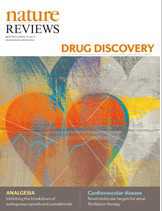J Neurosci:阿尔茨海默氏症患者诊断新标志物RNA结合蛋白
2012-06-17 Beyond 生物谷
近日,波士顿大学医学院(BUSM)研究人员确定阿尔茨海默氏症患者大脑中一种积聚的蛋白质组。这些调查结果发表在Journal of Neuroscience杂志上,该研究可能有助开辟新的方法来诊断治疗阿尔茨海默氏症患者。 β-淀粉样蛋白聚集诱导神经元蛋白质聚集引起阿尔茨海默氏病,阿尔茨海默氏病是一种神经退行性疾病。阿尔茨海默氏病的诊断对象主要是β-淀粉样蛋白和tau蛋白,主要用放射性标记物来结合β
近日,波士顿大学医学院(BUSM)研究人员确定阿尔茨海默氏症患者大脑中一种积聚的蛋白质组。这些调查结果发表在Journal of Neuroscience杂志上,该研究可能有助开辟新的方法来诊断治疗阿尔茨海默氏症患者。
β-淀粉样蛋白聚集诱导神经元蛋白质聚集引起阿尔茨海默氏病,阿尔茨海默氏病是一种神经退行性疾病。阿尔茨海默氏病的诊断对象主要是β-淀粉样蛋白和tau蛋白,主要用放射性标记物来结合β-淀粉样蛋白。然而β-淀粉样蛋白的成像是有问题的,因为许多认知正常的老年人大脑中也有大量的β-淀粉样蛋白,因此检测结果中会出现阳性结果。
近日,BUSM研究人员发现新的蛋白质组称为RNA结合蛋白,该蛋白也在阿尔茨海默氏症患者大脑中积累,尤其是在那些认知能力低于正常水平的老年人。该研究小组发现蛋白质如TIA-1和TTP聚集,诱导tau蛋白在神经元聚集。Benjamin Wolozin博士解释说:这些蛋白质还结合tau,可能参与疾病的发生发展过程。一个不同的RNA结合蛋白——G3BP聚集在神经元中,但不会诱导病理性tau蛋白聚集。
研究人员认为这项工作量化这些RNA结合蛋白这一生物标志物有利于开辟新的方法来诊断治疗阿尔茨海默氏症患者。

doi:10.1523/JNEUROSCI.1592-12.2012
PMC:
PMID:
Contrasting Pathology of the Stress Granule Proteins TIA-1 and G3BP in Tauopathies
Tara Vanderweyde, Haung Yu, Megan Varnum, Liqun Liu-Yesucevitz, Allison Citro, Tsuneya Ikezu, Karen Duff, and Benjamin Wolozin
Stress induces aggregation of RNA-binding proteins to form inclusions, termed stress granules (SGs). Recent evidence suggests that SG proteins also colocalize with neuropathological structures, but whether this occurs in Alzheimer's disease is unknown. We examined the relationship between SG proteins and neuropathology in brain tissue from P301L Tau transgenic mice, as well as in cases of Alzheimer's disease and FTDP-17. The pattern of SG pathology differs dramatically based on the RNA-binding protein examined. SGs positive for T-cell intracellular antigen-1 (TIA-1) or tristetraprolin (TTP) initially do not colocalize with tau pathology, but then merge with tau inclusions as disease severity increases. In contrast, G3BP (ras GAP-binding protein) identifies a novel type of molecular pathology that shows increasing accumulation in neurons with increasing disease severity, but often is not associated with classic markers of tau pathology. TIA-1 and TTP both bind phospho-tau, and TIA-1 overexpression induces formation of inclusions containing phospho-tau. These data suggest that SG formation might stimulate tau pathophysiology. Thus, study of RNA-binding proteins and SG biology highlights novel pathways interacting with the pathophysiology of AD, providing potentially new avenues for identifying diseased neurons and potentially novel mechanisms regulating tau biology.
本网站所有内容来源注明为“梅斯医学”或“MedSci原创”的文字、图片和音视频资料,版权均属于梅斯医学所有。非经授权,任何媒体、网站或个人不得转载,授权转载时须注明来源为“梅斯医学”。其它来源的文章系转载文章,或“梅斯号”自媒体发布的文章,仅系出于传递更多信息之目的,本站仅负责审核内容合规,其内容不代表本站立场,本站不负责内容的准确性和版权。如果存在侵权、或不希望被转载的媒体或个人可与我们联系,我们将立即进行删除处理。
在此留言










#RNA结合蛋白#
96
#阿尔茨#
65
#标志物#
68
#阿尔茨海默氏#
73
#阿尔茨海#
72
#ROS#
55
#阿尔茨海默#
56